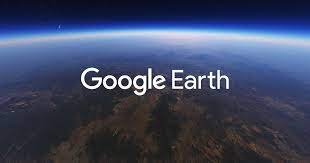Google Earth has revolutionized the way we explore and interact with our planet. From its inception, this remarkable tool has allowed us to virtually traverse the world, explore distant landscapes, and gain a better understanding of our surroundings. In this article, we’ll delve into the ins and outs of Google Earth, uncovering its features, applications, and how it has impacted various fields.
Introduction
Google Earth is a virtual globe, map, and geographical information program that was initially developed by Keyhole Inc. and later acquired by Google in 2004. It combines satellite imagery, aerial photography, and geographic information system (GIS) data to provide an immersive and interactive experience.
What is Google Earth?
Google Earth allows users to explore geographical data on a three-dimensional globe, providing a comprehensive view of Earth’s surface. It offers various tools to zoom in and out, tilt, and rotate the view to get a closer look at any location. Users can explore everything from bustling cities to remote landscapes, deep oceans to towering mountains.
Features and Functions
Google Earth offers an array of features that enhance its usability:
- Street View: This feature allows users to virtually navigate streets and view panoramic imagery.
- 3D Buildings: Users can explore cities in 3D, viewing detailed models of buildings and landmarks.
- Historical Imagery: Google Earth provides access to historical satellite imagery, enabling users to witness changes over time.
- Measurement Tools: Users can measure distances, areas, and even create their own maps.
- Layers: Google Earth’s layers showcase additional information, such as borders, roads, and weather patterns.
How to Use Google Earth
Using Google Earth is intuitive:
- Download and install the application.
- Launch the program and search for a location.
- Use the navigation tools to explore the chosen area.
- Click on icons and features for more information.
Google Earth Pro for Professionals
Google Earth Pro caters to professionals in fields like urban planning, engineering, and architecture. It offers advanced features like high-resolution printing, the ability to import and export GIS data, and the option to create custom maps and tours.
Educational Applications
Educators use Google Earth to teach geography, history, and environmental studies. It offers a dynamic way to engage students in interactive learning experiences.
Environmental Impact Assessment
Google Earth aids environmentalists in monitoring changes in ecosystems, deforestation, and urban development. It plays a vital role in assessing the impact of human activities on the environment.
Virtual Tourism and Exploration
For travelers, Google Earth provides a virtual tour of destinations before they even pack their bags. It’s a valuable tool for exploring potential vacation spots.
Archaeological Discoveries and Research
Archaeologists use Google Earth to identify potential excavation sites and analyze landscapes for hidden historical structures.
Also read: Mastering Your Drive: Unveiling the Power of Google Waze for Seamless Navigation
Google Earth Outreach
Google Earth Outreach empowers nonprofits and organizations to use mapping tools for social and environmental causes, such as disaster response and community development.
Real-time Data and Imagery
Google Earth offers real-time data on traffic, weather, and natural disasters, aiding in emergency response efforts.
Privacy and Security Considerations
While Google Earth enhances our understanding of the world, concerns about privacy and security arise due to the detailed imagery it provides.
Future Developments
Google continues to innovate with features like improved 3D imagery, better integration with other Google services, and expanded real-time data offerings.
Conclusion
Google Earth has transcended its initial purpose as a geographical tool. It has become an educational, exploratory, and informational platform that enables us to view our world from an entirely new perspective. Whether you’re a student, a traveler, an environmentalist, or a professional, Google Earth has something to offer.
Frequently Asked Questions (FAQs)
- Is Google Earth available for mobile devices?Yes, Google Earth has mobile apps for both Android and iOS devices.
- Can I contribute my own photos to Google Earth?Yes, users can contribute photos to Google Earth’s “Photos” layer.
- Is Google Earth free to use?Yes, Google Earth offers a free version with basic features. Google Earth Pro, with advanced capabilities, is also available for free.
- Can I use Google Earth offline?Yes, you can cache a limited area for offline use, but some features require an internet connection.
- How often is Google Earth’s imagery updated?The frequency of updates varies, but major cities generally receive more frequent updates than remote areas.


